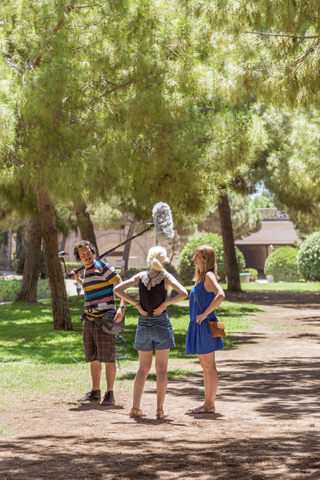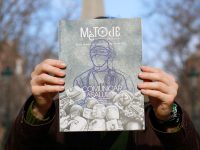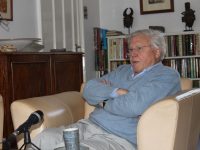Living with low vision
The journalist and actress Patty Bonet speaks about the everyday life of a person with albinism in a short film

A road, a supermarket, a restaurant, a park… They are everyday landscapes that can turn inhospitable when blurry and saturated with light. ¿Lo ves? (“Can you see it?” with English subtitles), a short film written and directed by the journalist and actress with albinism Patty Bonet, tells her everyday struggles due to the low vision produced by this genetic condition.
Despite the lack of pigmentation being the most characteristic feature of some albinism types, visual deficits are common to all of them. As the researcher of the National Centre for Biotechnology and specialist in albinism Lluís Montoliu states, «of the twenty types of albinism we currently know, most manifest with pigmentation disorders, but not all. Some types, such as ocular albinism or some syndromes, do not present it. In any case, all types of albinism present the same visual alterations».
The documentary presented by Patty Bonet and shot on a subjective camera, allows the viewer to experience her life, because it reflects her particular visual impairment, which corresponds to OCA4 albinism (oculocutaneous 4). In fact, in order to adapt the camera to Patty’s vision, the crew had the scientific and technical advice of Lluís Montoliu.

The documentary was shot on a subjective camera and used the technical adjustments necessary to reflect the visual impairment of the protagonist. / Flare Producciones
Blurry and light-saturated image
Why do these visual impairments occur in people affected by albinism? «Firstly, because they lack the fovea, which is the point of maximum visual resolution in the retina», Montoliu explains. «This is what allows us to see all the details in our surroundings. The rest of the retina, the peripheral retina, is very low-resolution, and is the only one that albino people have». Therefore, they have less photoreceptor cells to translate the images they see into information, so these end up blurry and without definition.

Photo: Flare Producciones
The absence of a fovea also produces a secondary alteration, the constant and involuntary movement of the eye (nistagmus). Their brains try to focus objects but if they are out of focus, as happens to people with albinism, because they lack definition, their eyes moves to different corners, trying to look for an angle to focus the environment correctly. It is not successful in doing that, so it keeps moving the eye continuously.
Another factor that determines the low vision of most people with albinism is that, because they have no pigmentation, their iris is translucent. As Lluís Montoliu indicates, our iris acts as a camera diaphragm, opening and closing to let light in (through the pupil): «in Patty’s case, this curtain is translucent, light comes in because there is no pigmentation, so she receives much more light in her retina and is dazzled».
Another aspect of people with albinism is the lack of three-dimensionality. «One of the things the short film shows is that Patty’s focal distance is just 80 cm away. If an object lies beyond that, it is nothing for her. Therefore, when she comes into a bar or a supermarket, she does not have a sense of what is close or far away», Montoliu concludes.
Patty Bonet was tired of being asked if she could not see, so he wanted to raise awareness of this type of albinism with the film. ¿Lo ves?, produced by Flare Producciones, was funded by the ONCE foundation and supported by the Divina Pastora Foundation, ALBA (Association for the help of people with albinism) and CIBERER (Networked Centre for Rare Diseases Research). The short film will be projected in several festivals, as well as conferences and schools.





